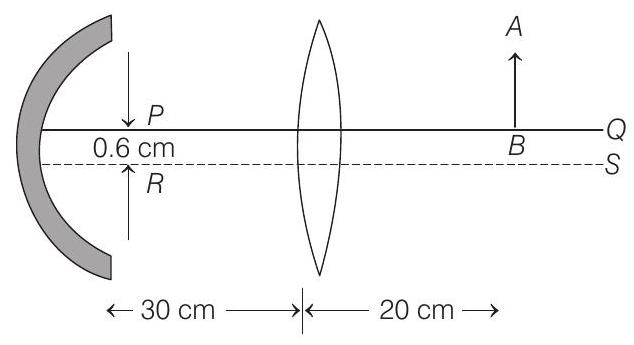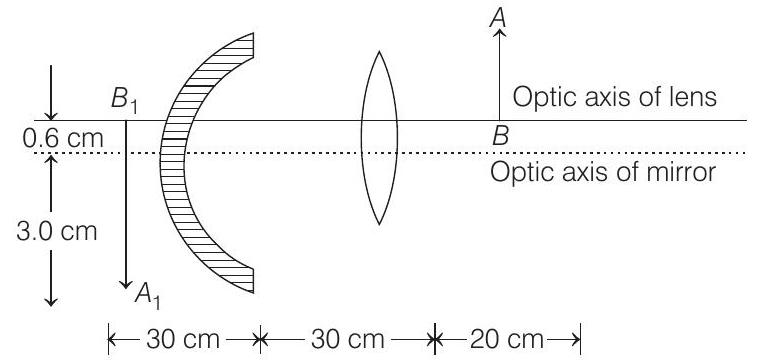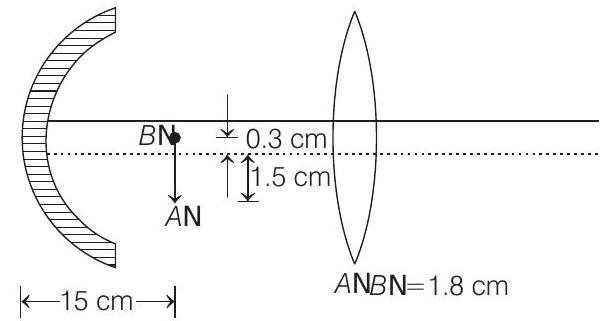Optics 7 Question 40
41. A convex lens of focal length

The distance between the lens and mirror is
Show Answer
Answer:
Correct Answer: 41.
Solution:
- (a) Rays coming from object
Refraction from the lens
Using lens formula
and linear magnification,
i.e. first image formed by the lens will be at

Reflection from mirror Image formed by lens
Using mirror formula,
and linear magnification,
i.e. final image
Point

Total magnification of the image,
Note that, there is no need of drawing the ray diagram if not asked in the question.
NOTE With reference to the pole of an optical instrument (whether it is a lens or a mirror) the coordinates of the object
Here,
Similarly,
Here,






